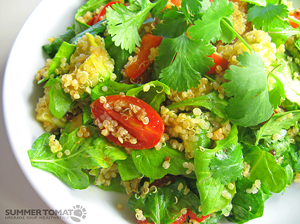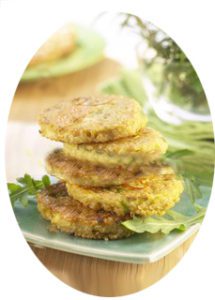Quinoa: The tiny grain that packs a nutritional punch
Quinoa, the nutty-flavored South American food is low in fat, high in protein, fiber and more


Myth: Quinoa is weird.
Fact: Quinoa, pronounced KEEN-wah, is really cool, albeit unfamiliar to most Americans. According to food scientist Harold McGee, chenopodium quinoa is a native of northern South America and was a staple food of the Incas. It was domesticated around 5000 B.C. Today, most of the world’s supply is grown in Peru and Bolivia. It’s in the same family as beets and spinach, and although the fresh greens of the plant are edible, it’s the tiny round seeds that are typically eaten.
Myth: It just isn’t widely available like other grains.

Fact: You’ll find the nutritional grain at any natural food market and at some traditional grocery stores. Save money by purchasing from a store that offers grains in self-service bulk bins. You can also purchase online from companies such as Bob’s Red Mill.
Myth: It isn’t as nutritious as other grains.
Fact: Quinoa’s a nutritional powerhouse. It’s high in protein compared to most other grains, and like soy, the protein is complete, containing all nine of the essential amino acids required by humans.
A typical serving of 3/4 cup cooked packs four grams of healthful fiber and more than two milligrams of iron.
It contains respectable amounts of magnesium, folate and vitamin B-6.
Quinoa also receives accolades for what it doesn’t contain: pesky cholesterol and saturated or trans fat.
The USDA MyPyramid Food Guide counts 1/2 cup of cooked quinoa as a serving of whole grain.
Myth: It’s just is too bitter to be tasty.


Myth: Quinoa has limited uses and is complicated to prepare.
Fact: Quinoa is a versatile and delicious whole grain with a mild, slightly nutty flavor. It can be cooked in water like rice, by simmering for 15 to 20 minutes until the extra water is absorbed and the curly germ separates from the seed. It also can be added to soups and stews, and ground into flour for use in bread products.
It doesn’t contain the sometimes-troublesome gluten proteins, so it’s an allowed grain for people who need to avoid gluten.
By Jackie Shank
Appeared in Jacksonville.com on December 23, 2010
The Goods is a monthly column about food myths and facts by faculty members in UNF’s Department of Nutrition and Dietetics. Have a question about quinoa? Contact Jackie Shank at jshank@unf.edu.
